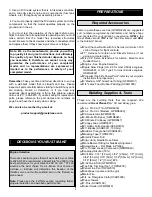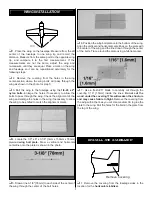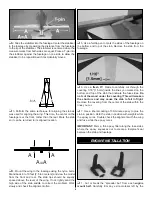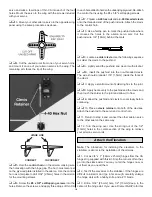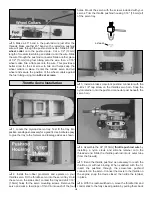
❏
2. Slide the stabilizer into the fuselage. Center the stabilizer
in the fuselage by measuring the distance from the fuselage
to the tip of the stabilizer. The stabilizer is centered when the
measurements from both sides are equal. Place a T-pin into
the stabilizer against the fuselage on one side to allow the
stabilizer to be repositioned if it accidentally moves.
❏
3. Perform the same technique for aligning the stab as
was used for aligning the wing. This time, the center on the
fuselage is at the front, rather than the rear. Mark the stab
so it can be returned to its aligned location.
❏
4. Mount the wing to the fuselage using the nylon bolts.
Stand back 8 to 10 feet [2.5 to 3 meters] and view the model
from the front and rear. The stab tips should be equally
spaced above the level of the wing. If not, lightly sand the
high side of the stab saddle to correct the problem. Work
slowly and check the alignment often.
❏
5. Use a felt-tip pen to mark the sides of the fuselage on
the bottom and top of the stab. Remove the stab from the
fuselage.
❏
6. Use a
fresh
#11 blade to carefully cut through the
covering 1/16" [1.5mm] inside the lines you marked on the
bottom and top of the stab that indicate the fuse sides.
Do
not cut the wood under the covering! This will weaken
the structure and may cause the stab to fail in flight.
Remove the covering from the center of the stab within the
lines you cut.
❏
7. Use a liberal coating of 30-minute epoxy to glue the
stab in position. Hold the stab in position with weights while
the epoxy cures. Double check the alignment with the wing
and fuse while the epoxy cures.
IMPORTANT:
Form a thin epoxy fillet along the fuse sides
where the epoxy squeezes out to create a fuelproof seal
between the stab and fuselage.
❏
1. Cut or break the “spreader bar” from each
engine
mount half.
Carefully trim any extra material left by the
ENGINE INSTALLATION
A
A
A=A
8



